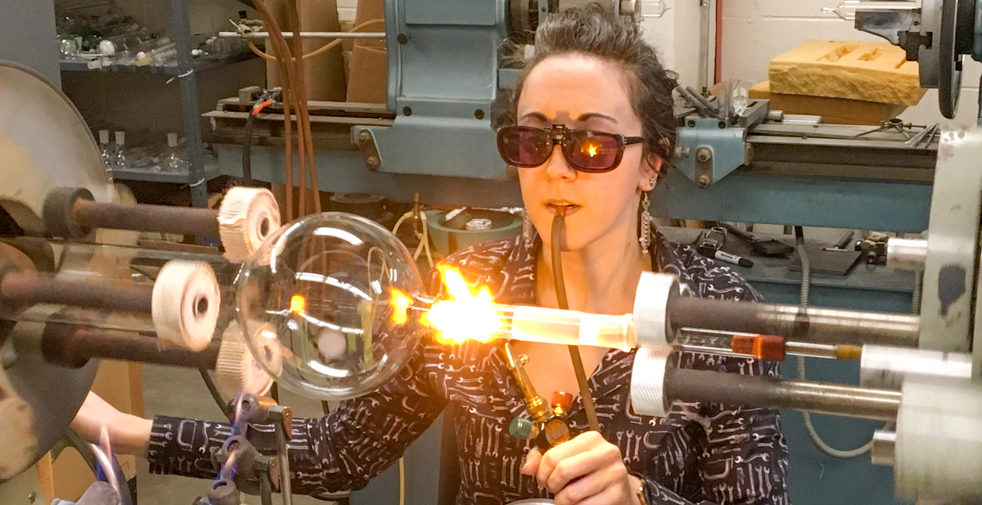Tucked away in the basement of the Ford Building is the Glass Shop. In this tucked-away shop, Elayne Ashley turns glass into various scientific instruments, ready to be used in experiments conducted all through campus.
Ashley described the start of her career in this uncommon job: a fine arts major in her undergraduate years, she decided to explore the scientific glassblowing realm because she wanted to “strive for precision and skill.”
“At the end of the day my customers are furthering science and the endeavors of mankind,” she explained. “Something I make is going directly into an experiment that is helping a [researcher] prove a theory.”
As she rifles through her drawers of glass, Ashley’s passion for glass is clear. She produces different samples of glass and explains their different uses in the scientific world. There is a glass that she has designed to be able to bend, and a glass that is almost entirely free of imperfections, which is essential for experiments where there needs to be very little light distortion.
Her various creations, specifically tailored to the experiments they are going to be used for, are so unique that they cannot be found in a catalog.
Yet, her background in art includes a scientific knowledge of glass. As a scientific glassblower, Ashley’s work is not just creative but also technically grounded.
Ashley must be knowledgeable of the various chemical compositions of the types of glass she uses and how the chemical composition directly impacts the utility of the apparatus in research, as various departments on campus require different aspects of glass in the apparatuses they use. Ashley discussed the importance of these varying compositions in her work.
“Aerospace has me doing a lot of quartz work as it’s a material that gets to a higher temperature and it has a higher optical clarity,” Ashley explained. “[This is because] quartz is pure
silicon dioxide.”
Despite her knowledge in the technical realm of science, Ashley still stressed the importance of art in her work. The intricately made glass apparatuses in her shop serve as evidence for the importance of combining the uniqueness of art with knowledge of science.
“Training as a scientific glassblower mostly trains you in the techniques of fabrication, not really in the background of the material. As an artist, I had to learn a lot of the chemical background of the material in order to understand how to work with it, which has helped inform my experience here,” said Ashley.
For those interested in learning more, the Glass Shop hosts open houses throughout the year where anyone on campus can come see what Ashley does on a day to day basis, including her glass blowing demonstrations.
Ashley also encourages researchers on campus to consult with her on various issues they may be having to discover how her work and knowledge in the chemistry of glass can help solve those problems.
